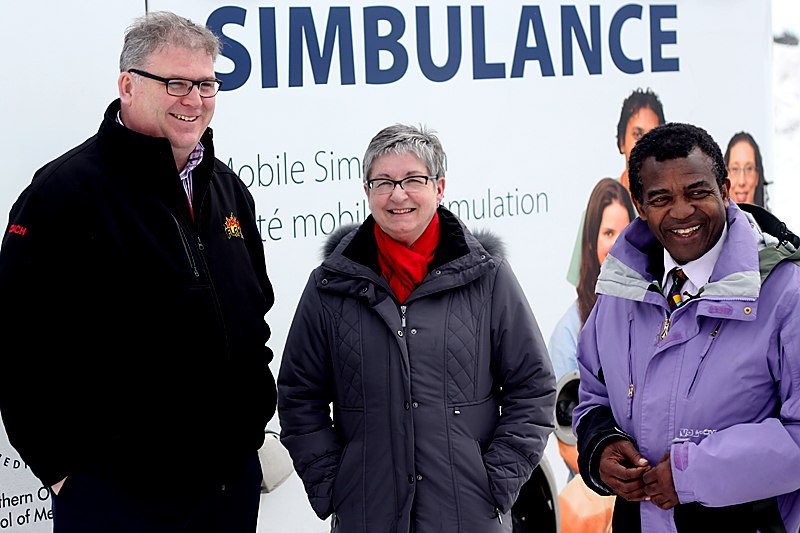Thanks to a decommissioned ambulance, the region’s medical school is able to put some of their equipment on wheels.
The Northern Ontario School of Medicine on Friday unveiled their Simbulance, an older Superior North EMS ambulance that allows for the transport of training tools throughout the region.
The program is a pilot project that will begin by allowing facilitators instructing students at locations throughout the region to learn how to best teach their pupils.
Siobhan Farrell, director of active learning in undergraduate medical education department, said prior to the initiative health professionals who were teaching students would have to travel to Toronto or other cities to receive training for the education component.
Students are sent to communities such as Kenora, Dryden, Sioux Lookout and Fort Frances to obtain experience working in the field. For the workers instructing them, it’s an inconvenience to have to travel to take training that they feel is necessary to provide the best possible education.
With the school of medicine truly serving the entire northern region of the province, it was imperative for the institution to find a way to spread their resources across the territory.
The Simbulance allows them to bridge the vast distances between communities.
“It’s very challenging with this type of equipment but at least it will allow us to support what we’re doing in the communities,” Farrell said.
“We have many clinical faculty in those communities who need to maintain those competencies to train those students...It’s trying to meet the needs of those sites because we depend on the clinical faculty in all of those communities who are teaching our students so this is supporting and allowing them to do their jobs.”
For the students, the Simbulance follows a trend in how aspiring medical professionals learn their craft.
Story continues after video...
Farrell described providing students with the opportunity to give students simulated experience as being “critical” to their education.
After all, there is a lot less pressure working on a mannequin than a live, breathing body.
“It’s becoming more and more the norm in medical education,” Farrell said.
“An important part of this process is debriefing after the simulated scenario takes place. It’s about learning how to work as part of a team in an interprofessional environment and actually doing procedures.”
The Simbulance will be used by community partners throughout the region, including the local paramedic program.
Superior North EMS chief Norm Gale said other than being repainted and having the markings removed, the vehicle is still a functioning ambulance.
That means it has the capability to serve as a training tool itself.
“It has complex electrical components to support the diagnostic equipment with the room inside to maneuver and to perform the skills you’ll need. It’s a good environment and we’re particularly excited our paramedics will get an opportunity to use it as well,” Gale said.
